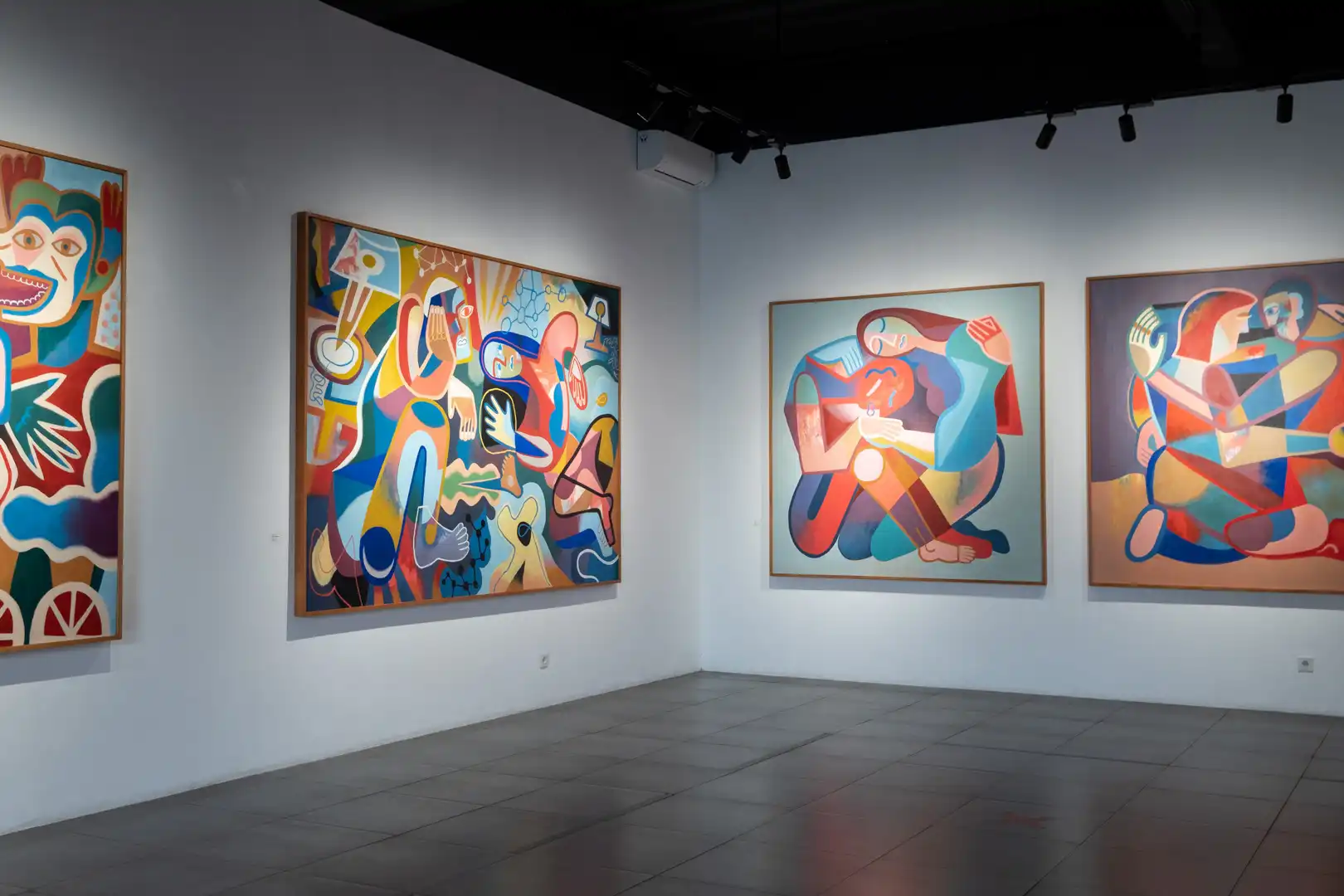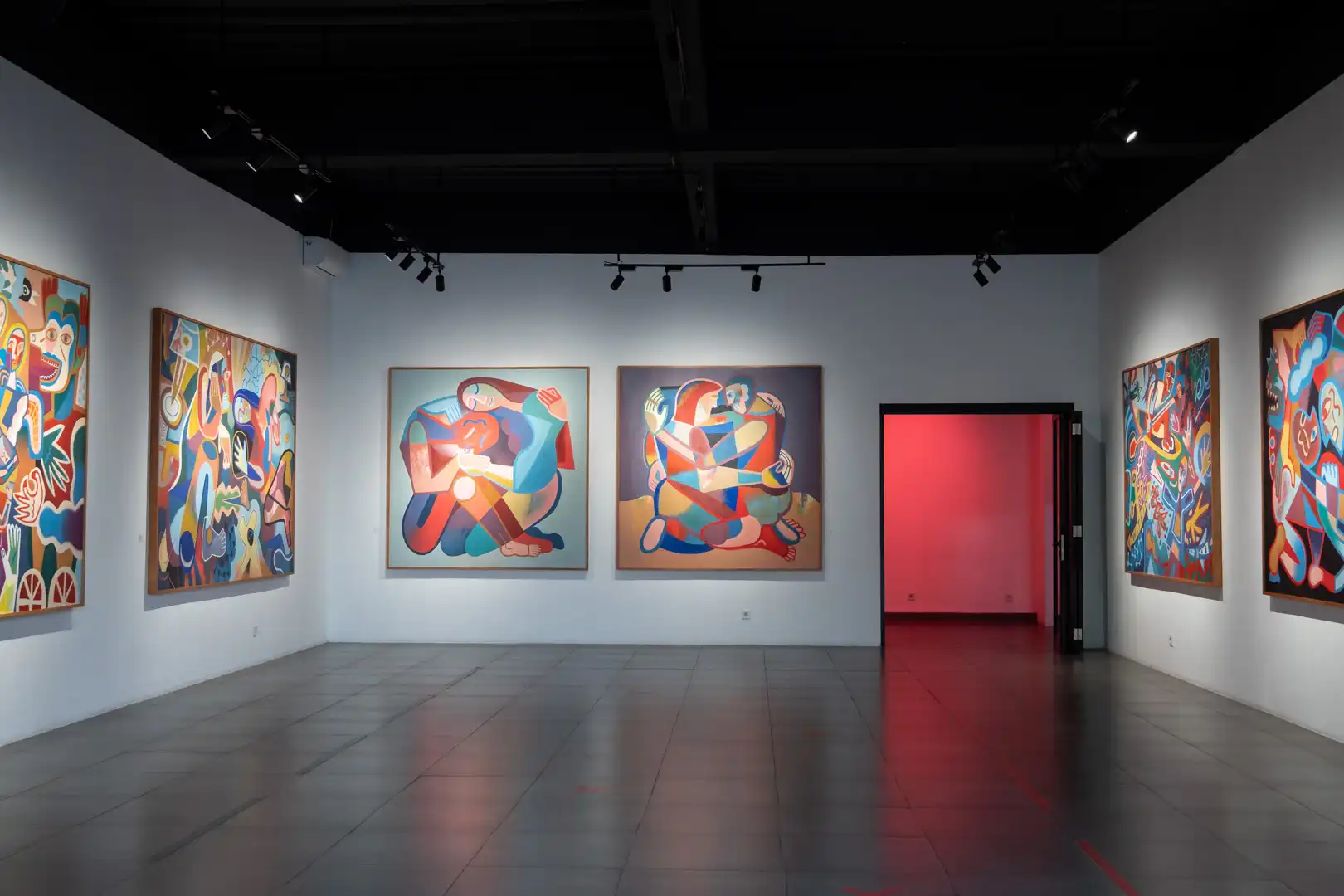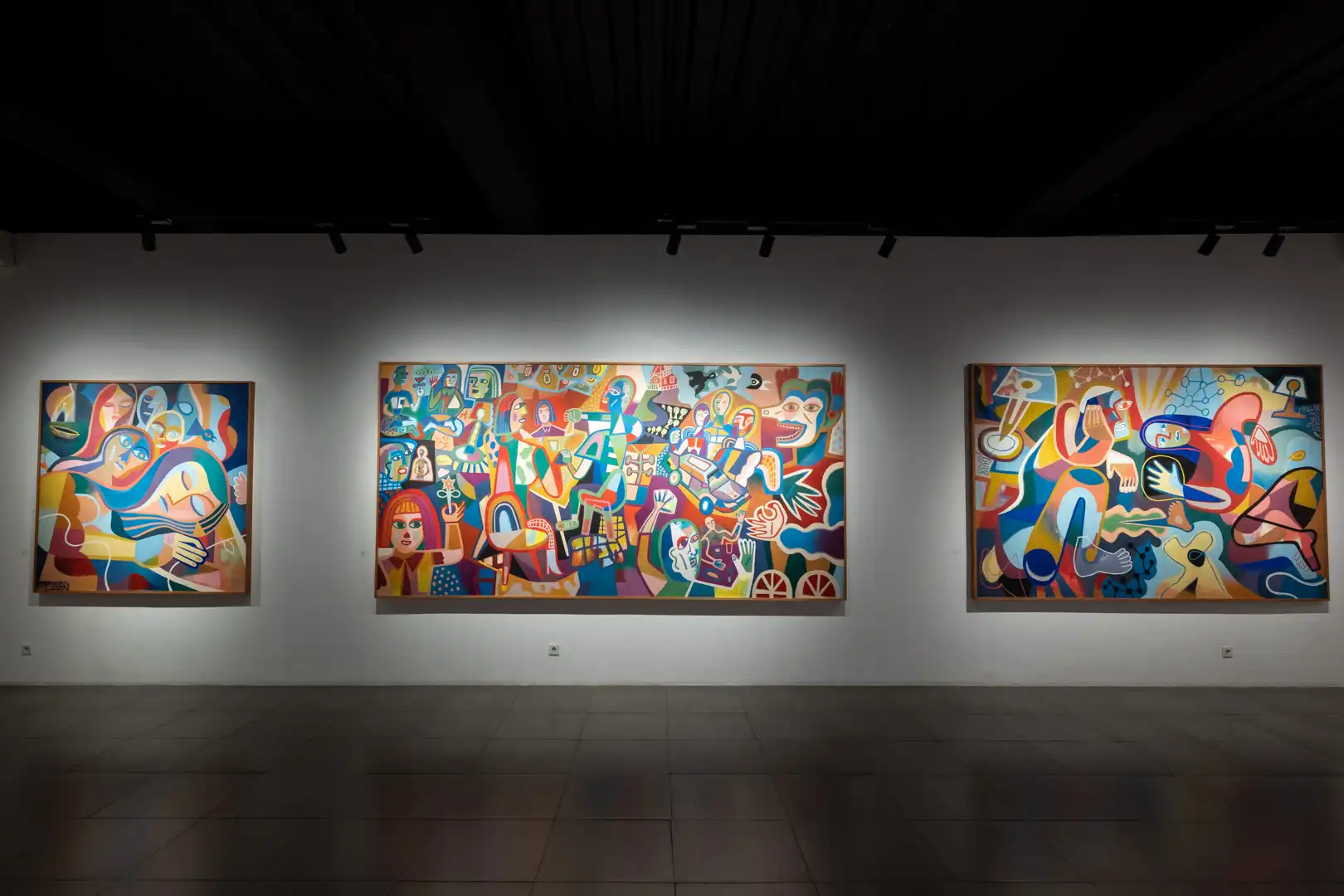



Ritual Merilis
A solo exhibition Abenk Alter
“To communicate our ideas and sentiments, we use many kinds of languages. The visual arts constitute one of those languages.”
Art as Image and Idea, Edmund Burke Fieldman.
Continuing the Line! That is Abenk Alter's process in forming a drawing.1 Abenk starts a drawing by creating a line from one point to the next until it forms a surface, space, and shape. Abenk did it with the fastline method, by simply following the movement and control of his hand, continuing what was in the drawing.
Since childhood, Abenk loves to draw. His mother often gives him paper, tools such as pencils, pens, markers, and crayons for drawing. He draws something almost every day. This hobby that has been cultivated since childhood makes him familiar with lines and drawings. While he was still making music and often known as a singer/songwriter, Abenk never left his drawings.
When Abenk was working on his university final project in the Visual Communication Design course, Abenk made a book containing lots of drawings. His lecturer at that time encouraged Abenk to pursue his talents in drawing. Then in 2014, Abenk decided to focus on being a visual artist. For the first time, Abenk showed off some of the drawings and illustrations he made at Treehouse Kemang, shortly after he left his band.
That's the story of Abenk's journey with lines and drawings. Until now, the habit of drawing is also carried out with his children. Abenk is very happy to see the honesty that little children have when drawing because it can display the imagination of the child as it is. Like Picasso said that “All children are artists”. Spontaneity is what drives Abenk in the process of exploring his visual characters.
There is no intentional element in finding naive visual characters in Abenk's drawings. His visual character automatically appears when he is continuing his line. The visual characters in his work take patterns from objective reality such as everyday objects, humans, animals, and plants. Abenk deforms the shape of the object with the intensity of a firm line, then breaks it down into geometric shapes.









